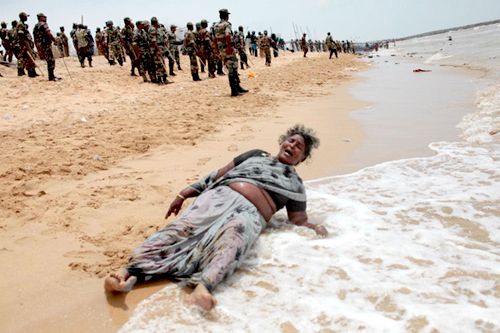
I had posted this as a comment to one of my Facebook posts on Koodankulam issue. A friend had posted this comment to my post on Koodankulam where one man got killed in the clash with the police.
The well respected ex president Dr Kalam says its safe. A lot of scientists say its safe. Still some miscreants sponsor such stupid acts, hiring illiterates and the poor along with protein fed GOONDAS. Net result – these deaths !
And I had a chance to watch a news debate in Reporter channel and here is what I wrote in response to my friend. My appeal to you too would be to educate me with your counter arguments against the valid concerns raised by Dr. C R Neelakandan.
I don’t think it is as easy as that. I had followed a debate on Reporter channel and the points raised by Dr. C R Neelakandan, an environmentalist who has worked in Bhabha Atomic Research Centre in Mumbai, seemed valid. Following is what he said. I don’t see any valid arguments that stand valid to these concerns. Let me know if you come across any (valid counter arguments instead of the so called “development” war cries).
===============================
Only 2.5% of the total energy needed is being produced by the atomic reactors in India (even after investing so much and given huge subsidies for 50 years) which is far more expensive than the energy from windmills.
After Three Mile Island, Chernobyl and Fukushima there are no countries that trust atomic energy as a viable soltution. Many countries have backed out of atomic energy. 54 atomic reactors were closed down in Japan in the last 1.5 years. After 1978, no nuclear reactors were granted permission in America. Germany has decided to close down all its atomic reactors in their country by 2020.
Koodankulam has many similarities to Fukushima. It’s in the seashore. Last time the Tsunami had struck this place. It is also a crowded place with Kanyakumari, Tirunelveli and Thiruvananthapuram (Kerala) districts are nearby. Another issue is environmental because the wastes of the nuclear plant are dumped to the sea. This could affect the daily lives of the fishermen folk who live here.
According to the Civil Nuclear Liability Bill, in case of a tragedy, the maximum amount of money that the responsible country has to pay is Rs. 1500 crore. Note that it is in RUPEES. What you must note here is that only the first phase of the tragedy in Fukushima had cost them 1500 crore DOLLARS. (The central government had decided on Rs. 500 crores and it is only after the Left parties got involved that they raised the amount at least to Rs. 1500 crores).
Koodankulam relies totally on the imported fuel for it’s function. Agreed that we need to import petroleum, but the difference from that one here is that in case if there is a policy change from the country that gives us the fuel, the fuel would stop. We have the example of Tarapur in front of us. We started with that reactor when America gave us the fuel. And when they stopped the export, our function was also stopped.
If you go to Tamil Nadu, you can see 6000 MW is being produced from the wind. If you just increase it by 2000 MW, you can avoid this fiasco. That will be something produced by the windmills made in India, which can be repaired in India, and it doesn’t result in such atrosious after effects even if it fails. So when we have this alternative here, why should we go after such expensive, risky solution? The radiation if it spreads outside would last until 50000 years.
We have been saying from 1980s that we would produce energy using Thorium. I was working at Bhabha atomic research center then. Even after 32 years we are held behind. Which means this is not going to happen. That is why we are importing the fuel. So what is the issue here? Some lobbies in this market cannot sell this in America, France, Japan or Germany. So they sell it here. In India and China. Philippines has a history of shutting down a reactor that has worked only for a day. Some people ask why would they strike against a plant that has been completed the work. There was a plant in America that was shut down after the plant was made functional and the fuel was loaded. Not only that, in America and France, the government is still wondering what to do with the waste of the closed down reactors and they are freezing it.
We have the example of Bhopal in case if something happens. We know that our country gave only Rs. 40000 to the deceased families after 20 years of tragedy. The responsible people are still living scot-free in America.
You know what? No insurance company grants insurance to this. Nuclear reactors don’t get insurance. Nobody gives loans to these. If Fukushima could cause radiation on the other side of Pacific, you can imagine how Koodankulam would effect the coastal areas of Kerala. Chennai is 700 KM away from Koodankulam, but Thiruvananthapuram is just 70 KMs away.
===============================
(Photo courtesy: Antony Kebiston Fernando





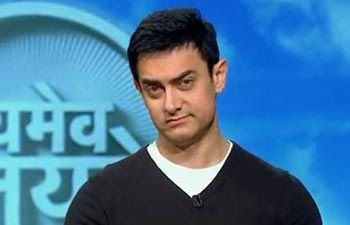 Okay, let me put things in it’s place before I start on the topic of the show
Okay, let me put things in it’s place before I start on the topic of the show 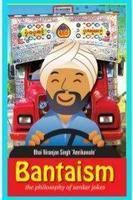 I have a friend who used to text me (and other friends in our local friends group) Sardar jokes. He took great pleasure in sending those texts and we enjoyed reading them. When we met, he always had a few sardar jokes to share. He enjoyed telling each of these sardar jokes and if not us, he had always laughed out aloud on those jokes himself. Rest of us even began to carefully choose other topics to talk about, so we can save ourselves from the sardar jokes. 🙂 But Sardar jokes are just too good to skip. I think what makes them popular is that it has certain amount of innocence to it. Or furthermore, it has a bit of us or our daily life in it. Something that we can relate to. It is this side of Sardar jokes that Niranjan Ramakrishnan is exploring with his book titled, “Bantaism: Philosophy of sardar jokes“.
I have a friend who used to text me (and other friends in our local friends group) Sardar jokes. He took great pleasure in sending those texts and we enjoyed reading them. When we met, he always had a few sardar jokes to share. He enjoyed telling each of these sardar jokes and if not us, he had always laughed out aloud on those jokes himself. Rest of us even began to carefully choose other topics to talk about, so we can save ourselves from the sardar jokes. 🙂 But Sardar jokes are just too good to skip. I think what makes them popular is that it has certain amount of innocence to it. Or furthermore, it has a bit of us or our daily life in it. Something that we can relate to. It is this side of Sardar jokes that Niranjan Ramakrishnan is exploring with his book titled, “Bantaism: Philosophy of sardar jokes“.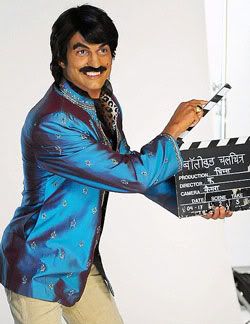 Last week the social media was abuzz with the allegations of
Last week the social media was abuzz with the allegations of 
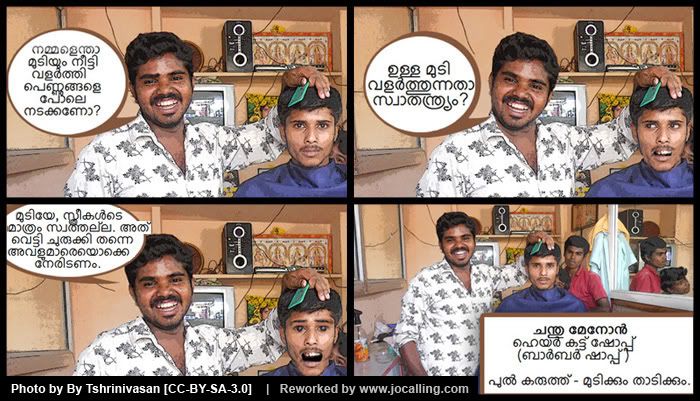
 Everything is powerful as long as it is in the powerful hands. The powerless are deluded by the powerful to think they have the power when they actually don’t. That is why we remain happy with our version of democracy or the predictions of India becoming a super power in 20xx. That is also why when the clergy teaches us of the greatness and acceptance of our version of religion makes us happy that we are part of something great, while we actually do not have any role in it. The powerful plays it all – politics, religion, race, caste and what not. And the powerless are only meant to nod their heads and fooled to believe that by doing so, they are playing a larger role. The powerful knows how to work their way though and that is what this news tells us of the fishermen, whose husband/brother were killed in cold blood by the Italian marines, forgiving the accused ‘in the name of Christ’.
Everything is powerful as long as it is in the powerful hands. The powerless are deluded by the powerful to think they have the power when they actually don’t. That is why we remain happy with our version of democracy or the predictions of India becoming a super power in 20xx. That is also why when the clergy teaches us of the greatness and acceptance of our version of religion makes us happy that we are part of something great, while we actually do not have any role in it. The powerful plays it all – politics, religion, race, caste and what not. And the powerless are only meant to nod their heads and fooled to believe that by doing so, they are playing a larger role. The powerful knows how to work their way though and that is what this news tells us of the fishermen, whose husband/brother were killed in cold blood by the Italian marines, forgiving the accused ‘in the name of Christ’.